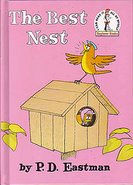A study reported in Science Daily finds that Roundup, the herbicide thought to be less harmful than most other toxic herbicides in its class, is highly toxic to amphibians at much lower concentration levels than tested previously. The study also finds that the pesticide’s deadly effects are not mitigated by the dilution of soil.
The study published in Ecological Applications finds that 71% of tadpoles were killed within weeks after being exposed to 1/3 of the maximum concentration level expected in nature. The study also finds that baby frogs, or tadpoles, are not the only stage of amphibian development affected. Tests also show that an application of Roundup® Weed and Grass Killer, a common product marketed to homeowners and gardeners, kills up to 86% of terrestrial frogs after only one day.
Researchers lead by Rick Relyea out of the University of Pittsburgh also find that adding soil to the test study, thought to absorb the pesticide, made no effect on preventing the death of most of the three species of tadpoles. The researchers join others nationwide who increasingly suspect that Roundup along with other common herbicides like atrazine to be primary contributors to the worldwide decline in amphibian species (see photo story). The decline is believed to be a gauge of the toxic pollution adversely affecting the natural state of the environment.
The active ingredient in Roundup, glyphosate, tops the list as the most widely used herbicide in the U.S., with up to 90 million pounds applied annually in agriculture and up to 8 million pounds in the non-agricultural sector – second only to 2,4-D, the chemical found in most “weed and feed” products. Monsanto, the corporate chemical giant that makes Roundup, also produces genetically engineering plants and seeds to be resistant to the herbicide, which studies show increases the use of the pesticide. Both 2,4-D and glyphosate enter waterways, including small wetland areas where tadpoles develop, due to toxic runoff from agriculture and urban and suburban lawns.
The study adds heavily to the weight of evidence that the inert ingredients used in the retail herbicide, not disclosed on the label due to a “trade secret” loophole, make it significantly more toxic than just its active ingredient glyphosate alone.
Note from Soutenus --Read this next statement slowly - I had to read it twice for the reality of it to settle in:
The Environmental Protection Agency only evaluates health and environment data submitted by the manufacturer on active ingredients and not on actual pesticide formulations sold on the shelves.Several other studies published in peer-reviewed journals over the years have underscored the lethal affects of Roundup to humans and wildlife.
Study Shows Glyphosate and Roundup Pesticide Toxic To FetusTAKE ACTION: Encourage schools, neighbors, park managers and others to stop using Roundup herbicides and adopt sustainable land care practices that will not adversely effect humans and wildlife. Join the National Coalition for Pesticide-Free Lawns or visit the Beyond Pesticides issue webpages.
Study Reveals Common Pesticides Damage Aquatic Communities
Monsanto Wins Plant Patent Rights, Loses Battle With Farmer
Glyphosate Contamination Detected in Humans
Study Shows Glyphosate (RoundUp) May Encourage Toxic Fungi Growth
Colombia Argonomist Reports Effects of Roundup® Exposure
SOURCE: (Beyond Pesticides, August 11, 2005)









2 comments:
Have you seen the movie Food Inc.? Very unsettling about Monsanto and the soybean. This company scares me a bit.
Nice
Post a Comment